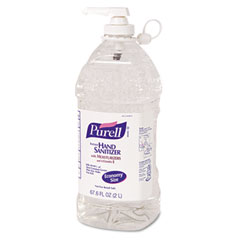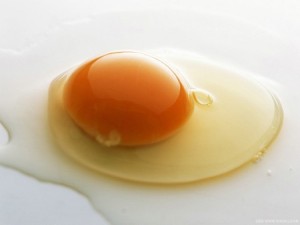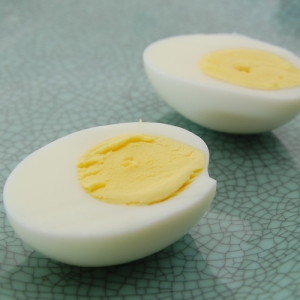In a post you have to be a mommy-scientist to find hilarious, Dr. Jekyll and Mrs. Hyde measures and analyzes her own lactation via breast pump. Normal mothers just worry if the baby is getting enough milk. Those of us with more degrees than are good for us worry about achieving a statistically-significant difference between the right and left boob. To understand why I found this so funny, and yet perfectly understandable, it helps to know that in the midst of my own first ultrasound, of my own first offspring, right after I thought “Oh my god! Look! My Baby!” I thought “Wow…what a cool machine…I wonder what these cost? We could make some reaaaaallly cool measurements in the lab with one of these.”
Why biologists make distracted parents
Posted in Uncategorized | Tags: breastfeeding
The 19 pound baby: there’s a reason they aren’t normally this big
In news that is making every woman who ever delivered a baby vaginally feel faint, the world is making much of the fact that an Indonesian woman has given birth to a 19 pound baby boy.
In general, the coverage is jocular and congratulatory — news anchors are mewling things like “Oooh, more to love”. The overall tone implies there’s we’re all competing to produce the biggest baby. Any moment someone is going to chest-slam the mom.
The coverage is starting to burn my bacon. There’s a reason we aren’t all producing babies this size, and it isn’t just because we’d like to be able to sit down sometime in the year after giving birth. Really big babies are dangerous. In general, there is light-hearted skipping over the details: the baby is this size because his mother had gestational diabetes; he was delivered via a prolonged, difficult C-section; the only pictures of the mother show her unconcious. Living as we do in the age of surgery, it’s easy to gloss over the fact that both mother and child would have died (rather horribly) if vaginal delivery had been the only option. This is what we biologists refer to as “natural selection”; as recently as 100 years ago (and right now, everywhere that mothers lack access to modern medical care), every mother with the tendency to make babies this big would have died, and the baby with her, before she could make any more. That’s why babies are generally small enough to fit down the birth canal.
The child himself is in danger of post-partum hypoglycemia (likely the cause in this case of reports that the baby has a giant appetite), with a risk of seizures or breathing problems. If the mom’s diabetes was not well-controlled (which the production of a super-sized baby would tend to imply), the baby is at risk of a range of birth defects resulting from poor blood flow to the placenta. And in any case, he’s way, way overweight, with all the health heartaches that implies. The size of his face? That’s fat.

In the U.S., if you are getting prenatal care, gestational diabetes tends to get detected long before your child starts getting in-utero recruitment calls from the Rams. A knowledgable doctor will do everything that can be done to control the diabetes. So, you know, I’m glad mom and baby survived. And you can call me a killjoy. But I’m wondering why no one is asking why she didn’t have better prenatal care, and I’m wondering why the Indonesians would advertise the failings in their care of pregnant women, instead of celebrating her baby’s dangerous size.
Posted in it could be worse, pregnancy | Tags: babies, pregnancy
Soap or Sanitizer? Just use some!
About once a year. I think that’s the right posting frequency. Don’t you?

It's too late for it to help me, but go on, don't hold back.....
Having spent the last week in bed, felled by the flu, I have had a certain amount of time (and reminders in the form of fever and surplus mucus!) to think about hand-washing (or the lack thereof). If you are living anywhere but on the Moon, you will have recently read at least one notice from someone officious — uuuuhhhhh, official that states you can reduce the spread of flu by “either washing your hands or using hand sanitizer” frequently. And to that, too late, I say amen. But I also say, Really? Either one? And there’s no difference?
As a matter of fact, soap and hand sanitizer work in completely different ways. One kicks all the hitchhikers off the bus, and the other one kills them, but leaves them in their seats. So which you choose to use could depend on whether you have a Tarantino-like personality. Or just if you have any water.
You don’t need me to tell you that in the course of daily life, your hands come in contact with what are commonly called Germs. (To a biologist, there is no such thing as Germs; there are a large variety of living things too small to see without the kind of magnification found in a microscope. But it’s tedious to list them all in every conversation where all you want to get across to your kids is that they must wash their hands even if they LOOK clean. Yes, NOW. So: Germs.) Germs stick to the oils produced by the skin on your hands. Thus when you touch your face (even though you’ve been told a million times not to, but the attraction of your fingers to your face is like that of the tides to the moon, inexxxxxxxxooooorrrrable) the germs get a ride right to your delectable, penetratable mucus membranes.
This is where the soap or hand sanitizer comes in. If you want to keep the germs hitching a ride on your hands from reaching their destination, you have to interrupt the trip, either by handwashing with soap, or rubbing in sanitizer. Allow me to ask you at this point: hasn’t it ever struck you as odd that you rinse off soap, but not hand-sanitizer? Why is that?
The difference is in the way each works. In your youth, you were told that soap “kills germs”. So was I. That, like the one about Santa, was a simplifying lie. (I know! Can you believe it? Santa! Not real!) As it turns out, what soap actually does is loosen the bonds that allow oil and dirt particles and their germ-jockeys to cling to your hands — then once they’re sliding around, without a firm hold on your skin, the water you run over your hands carries them right off. The process doesn’t actually kill the germs — it’s more like taking off their seatbelts, and then flooding the bus with the windows open. (This, in addition to the taste, is why it’s a bad idea to drink water you’ve washed with. Live germs still in there, folks.)
Hand sanitizer works differently. Hand sanitizer is mostly alcohol. Alcohol has many notable properties. In addition to making you feel woozily that perhaps it would be a good idea, after all, to have another baby, alcohol denatures proteins. “Denature” is a good term – it means to take a molecule of protein in its natural state and twist the bejesus out of it, until it is quite incapable of acting like the protein it was born to be.
What the hell am I talking about? An example:

egg proteins, au natural

egg proteins, de-natured (in this case, by heat)
The proteins in the first picture are living, functional, ready to make a fluffy baby chick. The proteins in the second picture? Dead. Tasty, but dead.
Alcohol has the same effect: it makes proteins of all kinds, like those found in bacteria and viruses, dead.
Thus, slathering on the hand sanitizer, which is generally on the order of 95% alcohol (go ahead, check the label, I can wait, it will say ethanol or isopropyl) kills your little hitchhiking germy friends, no rinse cycle needed. But as you do not rinse, their little germy corpses remain until the next time you wash your hands.
The Centers for Disease Control, which could otherwise be referred to as “Swine Flu Central” recommends hand washing for what is an interminable amount of time, if you actually do it for the whole time, and let’s face it, no one does. They recommend using an alcohol-based sanitizer only “if soap and water are not available”. So they must know something about the relative effectiveness of each that we do not. Or maybe they just hated “Inglorious Basterds” too. All I know is, some Basterd did not wash or sanitize their hands thoroughly enough, and I lost a whole week to prove it.
Posted in sickness and strife | Tags: Flu
Every sperm is sacred….
…but every sperm may not be great. Sometime last week I posted on the observation that older men are more likely to father kids who will go on to have problems with a variety of ailments. This observation is not all that surprising when you think about how sperm get made.
If you are a college graduate, it is very likely that you learned (or at least sat through a lecture on) how sperm get made. This would have happened in a biology course that you were forced to take as one of your “general education” requirements. “Wait a minute”, you may be saying, “I don’t remember that”. No. You don’t. Because in that lecture a professional biology professor, such as myself, demonstrating our professionability, used terms like “chromatid” and “telophase” and “centromere”, terms that made it sound like we were talking about equipment used during the Mars landing, and your eyes rolled up in your head and you passed out just about the time that we got to the money shot that made it all clear. And then you got that question wrong on the test. (It was question 25. The answer was “C”.)
Anyway, we won’t do that here. We’ll just stick to the essentials.
Read More…
Posted in makin' babies
Just don’t mess with his Legos.
The subject of Henry the Eighth came up yesterday, and my husband was forced to explain to our six year old, Adam, that he (H8) was a guy who got married six times, but cut all his wives’ heads off when he got tired of being married to them. Then, being the conscientious modern parent that he is, my husband noted that this, of course, was not a good way to deal with someone who you were tired of, or weren’t getting along with. “No,” said Adam, thoughtfully. “I would have poisoned them.”
Demonstrating conclusively that even small children instinctively understand the nuances of social behavior.
Posted in out of the mouths of babes | Tags: Add new tag, Parenting
Makin’ babies is for young ‘uns.
Well, that was a refreshing break. However, prodded by the excellent and virtuous Kent over at Uncommon Ground, I’ve decided to get off my keister over here…..
For those of us who have already produced all the kids we are going to, it’s too late, but there’s news you can use if you are still considering whose sperm to use when making babies. Or whether to use your own, should you be a man. Swedish scientists this week added to the growing body of evidence that older fathers are more likely to produce babies who will eventually be taxed with the kind of troubles you wouldn’t wish on anyone’s kid, much less your own. Earlier studies showed that children sired by older men are more likely to be stillborn; if born live, they are more likely to eventually endure autism, schizophrenia, and cancer. The Swedish study added bipolar disorder to the list.
Every parent I know who is over the age of 25 likes to joke that they are too old for the physical labor of caring for children (the sleep loss, oh my god the sleep!), but this is not funny. How old is too old? Menopause puts a clear dividing line down for women (capable of producing babies before/not capable of producing babies after) but men are famously capable of producing working sperm until very late into old age. (We are assuming that women do not cheat on their older husbands with younger men, right?)
Understanding how and why aging in a prospective father increases the likelihood that his child will be somehow unhealthy depends on understanding how men make sperm. It also involves something I think of as the Photocopy Principle. Next up: Where Do Sperm Come From?
Posted in makin' babies | Tags: Add new tag, Parenting, Science
it could be worse: they could actually kill each other
As I may have mentioned before, I have two sons. Lovely, affectionate boys; they kiss me even when I don’t ask, even the 10 year old. And yet, daily, I am forced to ask myself: why the hell can’t they keep their hands off each other? The whacking, the shoving, the tackling, the kicking …. it drives me around the bend. (Anybody else got this going on? I am collecting data with which to test the idea that boys are even capable of keeping their hands to themselves. Preliminary results: NO.) Not infrequently just the decibel level causes me to teeter close to behavior not sanctioned in your better parenting books (such as roaring “SHUT UP and get away from each other!” Not that I would actually ever do that. Ahem.). On those days, I take deep cleansing breaths, and remind myself that if they were herons, one of them would likely already be dead. And not in the figurative sense. Dead dead. Actually dead. Read More…
Posted in it could be worse, sibling rivalry | Tags: kids, sibling rivalry
poke-bells, poke-bells, bio-imitation all the waaaaaaay…
it could be worse: your back could hurt more
Good news! Scientists reported last week that women’s backs are different than men’s, and in a way that makes pregnancy plausible for those of us who walk upright. If only I’d known when I was pregnant: I could have crawled less. Read More…
Posted in it could be worse, pregnancy | Tags: pregnancy
internal fertilization leads to epidurals
So, what’s with this messy, painful business of giving birth to 7 lb babies through 1 lb body orifices? Examples of less strenuous forms of birth abound in nature. It turns out that the human form of birth lies at the end of a side road that starts with him putting his whatsis inside her yaya as a way of keeping the kids from getting eaten before they even have a chance to look like mom or dad. Read More…

